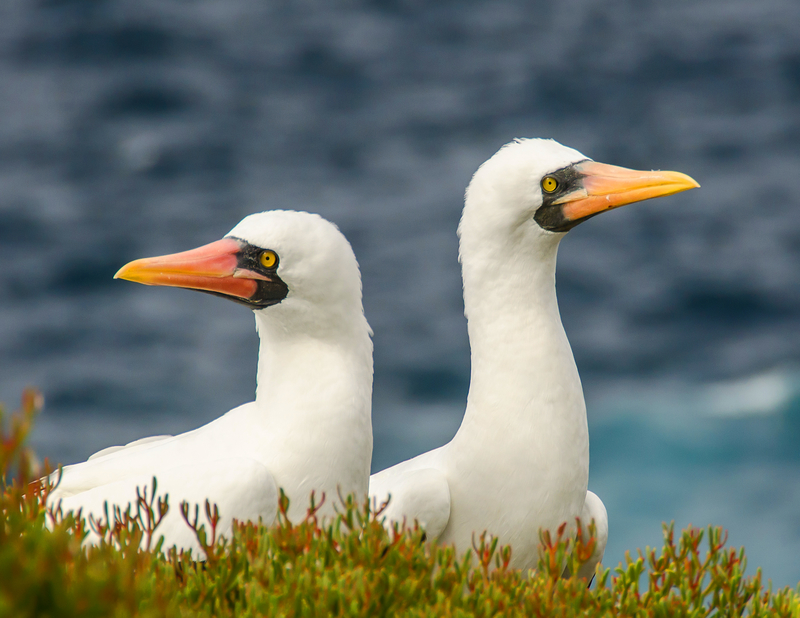People often ask me when the best time to visit the Galapagos Islands is. The answer, truthfully, isn’t that there really isn’t a “best” time to go. This isn’t a very satisfying answer, but it’s true; the Galapagos is one of those rare, can’t-miss, year-round destinations. The best time to go really depends on your personal preferences and what you want to see and do.
There are certainly different wildlife highlights depending on what time of year ago and what islands you visit . For example, if you go to Española in May, you will likely see waved albatrosses sitting on their nests. Or if you go in July, you have a better chance of seeing whales and dolphins off the coast of Isabela.
Thanks to the archipelago’s location on the equator and the currents that bring cold water from the west and south, the islands enjoy a relatively dry and temperate climate all year long. There are basically two seasons: the rainy season, which lasts from December through early June, and the dry season, which lasts from late June to November. If you keep them straight, you should be able to make a decision about when to go fairly easily.
Check out average monthly temperatures and precipitation in the Galapagos Islands here.
Here’s a few quick highlights of each season:
The Rainy Season (December through early June)

© Joseph Sina
Average high air temperatures are generally in the low to mid-80s and water temperatures are usually in the mid-70s. Warmer water temperatures mean relatively less plankton, so underwater visibility is better, but there are fewer fish compared to the dry season. The seas are also usually quite bit calmer and you can expect brief afternoon showers each day. This is a good time to visit if you want to see flowers in bloom (and much greener and more colorful vegetation), sea lions, sea turtles and land birds mating, and a lot of newborn animals.
Consider going during the rainy season if:
1. You prefer warmer, tropical weather.
2. You want to spend a lot of time in the water swimming and snorkeling, don’t like the cold, and don’t want to wear a wetsuit.
3. You don’t mind afternoon rain.
4. You are prone to seasickness.
The Dry Season (late June through November)

© Sarah Higgins
This time of year is often called the “garua season” in reference to the light mist that clings to the islands at higher elevations. In June, the cold Humboldt Current arrives from the South and air and water temperatures begin to cool. By August (the coldest month), average high air temperatures drop to the mid-70s while water temperatures average just 68 degrees Fahrenheit. Though the skies may be overcast, there is very little rain. The seas tend to be a bit rougher, and it can be windy, though overall it’s still very pleasant. The arrival of colder water causes plankton to bloom, which reduces underwater visibility and attracts a greater abundance of fish, including whale sharks. This is a great time to visit if you want to see penguins, albatrosses, blue-footed boobies performing mating rituals, whales, dolphins and seabirds.
Consider going during the dry season if:
1. You prefer cooler, dryer weather or you are sensitive to the sun.
2. You don’t want to spend a lot of time in the water or you don’t mind swimming in colder water or wearing a wetsuit.
3. You are not prone to sea sicknesses.
4. You want to sea whales and dolphins.
To learn more about the best time to visit the Galapagos based on your interests and preferences, contact a Galapagos travel expert at Natural Habitat Adventures at 800-543-8917 or email info@nathab.com.































